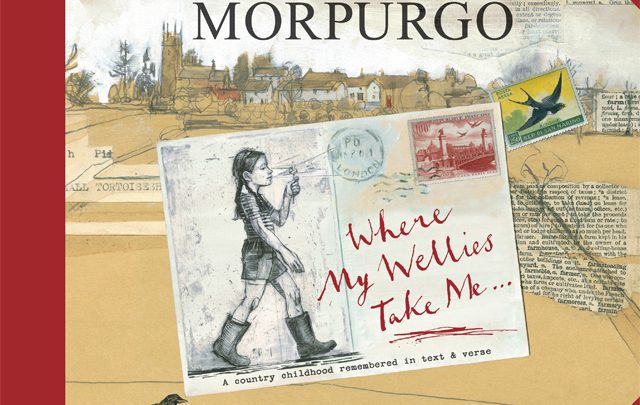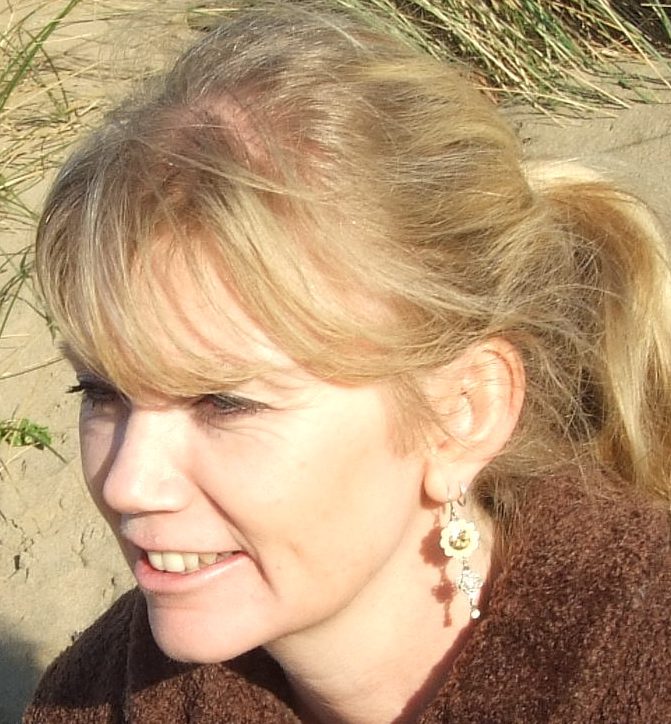KS1/2 Book Topic - Where my Wellies Take Me

Where My Wellies Take Me uses 40 evocative poems to celebrate the wonder of childhood, germinating a love of verse that will stay with pupils for many years to come… Sometimes I discover books I know will be brilliant for a particular class or that will inspire work on a particular theme. Then there are […]

- by Judy Clark

Where My Wellies Take Me uses 40 evocative poems to celebrate the wonder of childhood, germinating a love of verse that will stay with pupils for many years to come…
Sometimes I discover books I know will be brilliant for a particular class or that will inspire work on a particular theme. Then there are stories I just can’t wait to read because I’m certain the children will be totally captivated. Where My Wellies Take Me by Clare and Michael Morpurgo is all of the above. For me, it is a truly memorable treasure that every single child should have the privilege to experience as part of their primary literacy education. Yes, it really is that special.
Where My Wellies Take Me is so much more than a collection of poems. Written as a celebration of childhood, the countryside and the part poetry plays in exploring both, the book takes the form of a child’s scrapbook created by Pippa – a young girl whose wellie-clad adventures create the narrative frame for the poems contained within.
We journey with Pippa throughout a whole day’s walk in the countryside. Following her illustrated map, we are introduced to her favourite poems at every turn, bringing her discoveries, thoughts and reflections to life.
Illustrated and designed by Olivia Lomenech Gill, the scrapbook is a lavish and stunning work of art in itself. Maps, sketch work, pull out pages and tracing papers enhance and punctuate the story, taking us and our wellies into Pippa’s world: when she sees a golden bumblebee, stiff from cold, crawl onto the boot of her wellie, so do we.
As an inspiration and model for pupils’ own scrapbooks and journals, it’s unsurpassed.
The place of poetry As developing readers and writers, pupils need to understand and explore the first part of the writing process – that thought, the spark of an idea, an experience, passion or observation. Morpurgo has always been wonderful at sharing his inspirations and discussing these with the children is always powerful.
There are many inspirations for this book, but the importance of an early love of poetry is high on the list. As a child, Clare Morpurgo – who chose the 40 wonderful poems in the book – was encouraged by her headmistress to learn a new poem a week by heart. Michael himself had a mother who instilled a love of poetry by reading to him at bedtimes.
I myself was lucky and had a mother who would make up stories about a witch called Hazel (inspired by my constant tomboy behaviour, scraped knees and the inevitable bottle of witch hazel in the medicine box). I have favourites learned aged eight that I can reel off even now.
It is this experience we want to give to all our children as teachers. Why? For in poetry there is no better way to instil a love of words, ideas and language in our pupils.
Poetry is at the heart of reading and writing: its cadence, the images it creates, its sounds, how it makes us feel in our bones. There are long poems, short poems, every kind you can imagine – from limericks that make you smile to narrative poems that unravel a story in such style. In short, there are poems for every child to love.
Where My Wellies Take Me contains a range of classics themed fittingly by animals and the countryside, from Incy Wincy Spider to The Listeners by Walter de la Mare. The list of poets chosen is no less impressive, introducing children (and teachers) to Blake, Yeats, Ted Hughes and John Masefield, to name just a few.
A whole year’s work Whether you’re in Y2 or Y6, there are so many opportunities to explore and use this book for reading, writing and cross curricular work. There are 40 top-quality poems here and to rush through them would be such a shame. For me, this is an ongoing poetry appreciation project to be explored, worked on and celebrated throughout the year – culminating in the creation of pupils’ own poetry scrapbooks, which they will treasure and share for years to come.
Begin by introducing the book, the project and establishing your poetry environment. Read the introduction written by the Morpurgos, and ‘The Story of This Book’ (p92) – the final section which explains the origins of Where My Wellies Take Me.
Whether your school is deep within the heart of Devon or in the big city of Manchester, an enjoyable introduction would be to take the recent Newsround Quiz: ‘Do you know where your food comes from?’. After all, one in three of the children who took part in the British Nutrition Foundation survey thought that cheese came from plants…
Take some of your favourite poems to read and share. Children love to see you recite a poem and poetry performance tends to be contagious: once you start, pupils will add more and more to their repertoire. Encourage children to bring in poems they love, or ask them to bring poems their family members love.
You might choose The Magpie Rhyme or The Owl and the Pussycat from the book just to reinforce how many different types of poem there are – some simple, some well known, some traditional. Poetry is so accessible, especially on the internet. Each major poet often has his or her own website and there are many sites to explore. (Try poetryzone.co.uk to get started, or my favourite, poetrystation.org.uk, where poets read their own work on video.)
Give each pupil an old exercise book to decorate and use as a draft scrapbook in which to start collecting any poems they like. My class used to have a Friday afternoon rota where they had the opportunity to share any poem they had found that week. Guess what? They had often learnt these poems by heart, completely independently.
Once the poetry seed is planted, keeping it watered doesn’t take long: read poem a day; make time for children’s scrapbooks during guided reading; and create a rich environment where poetry books are available in class at all times.
Mapping out the project Reproduce the map of Pippa’s walk as a whole-class display and use this as the focus for your work. Budgets are tight, but if you keep a few copies of the book permanently on display, children will enjoy dipping into and exploring these on a regular basis.
Follow your map and begin reading Pippa’s story. The book can be used as a class reader, but the jump off points are endless. Literacy work on imagery, vocabulary, atmosphere can all be enhanced by the poems – you could even try diary writing as Pippa’s story has a strong first person voice throughout.
Remember that appreciation of the story and poems is the key priority. Encourage reflection and discussion each time you pick up with Pippa’s walk, or even write comments and reflections to add to your display as you follow the class map over the weeks.
Once children become familiar with the book’s format and have built a personal love and appreciation of poetry, introduce the idea that, over the coming months, they will go on to design an illustrate their own special scrapbook. This will include a small handful of poems of their choosing, around which they must create a story.
Creating your scrapbook The opportunities for cross curricular work are numerous and I’d be tempted to spend some time on both the narrative and art and design elements of the children’s scrapbooks to create something hugely special. Having kept the profile of poetry high across the previous months and through your ongoing exploration of the book, the children should be ready to choose their poems. Where My Wellies Take Me, of course, has its own theme, which you could continue. Alternatively, the children could choose a new direction. Themes you might want to consider include:
i) Any previous work on Katie Morag would lend itself beautifully to a day’s walk around the Isle of Struay and sea-themed poetry.
ii) Pippa’s walk was a kind of holiday journal. Perhaps the children would like to choose somewhere they know well from one of their holidays to create their walk?
iii) The local area is always a popular option and a walk created locally would mean you could physically map the school’s surrounding. Take note books to sketch and reflect just like Pippa does.
iv) Even the school grounds would be space enough to focus a walk – perhaps with school-themed poems to match.
Encourage the children to draft their stories around both the walk and the poems they have chosen. Techniques and narrative features taken from the original can be explored here: the colloquial style; use of the first person; Pippa’s attention to detail; the use of vivid description and figurative language, etc.
Then comes the design element, which is integral to the scrapbook. There are opportunities for:
i) Sketch work with charcoals and pastels
ii) D&T pop ups and ‘lift the flaps’
iii) Use of different media and papers, perhaps combining actual photos of children’s walks with illustrations
iv) Any pressed flowers collected could be collaged
v) Poems presented on different papers, or an exploration of calligraphy
Unlike Olivia Lomenech Gill, you don’t have the restrictions of mass printing and so can combine artefacts or specimens collected to great effect
Whatever you do with your scrapbooks should be celebrated. You could market and sell them to family members to raise money for the Morpurgo’s Farms for City Children charity; run a competition for the best scrapbook; even create a whole-class display of the project for parents, complete with a poetry recital.
The project will be remembered by children when they leave school, give them a treasured scrap book they can share with their own children, and plant the poetry seed for life. Mighty oaks from little acorns grow…
Where will their wellies take your class this year?
Judy Clark is primary adviser at the National Literacy Trust. She is also English ITE lecturer, and Talk4Writing Adviser, together with Pie Corbett.










